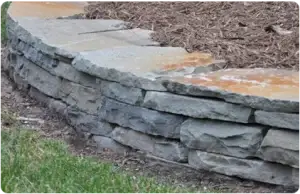How to Design the Perfect Outdoor Living Space: 10 Essential Tips
Close your eyes and imagine a warm summer evening, the gentle rustling of leaves in the breeze, and the soft glow of ambient lighting illuminating your perfect outdoor sanctuary. With the right outdoor living space design, this idyllic scene can become your reality in your very own custom-designed outdoor living area.
In today’s fast-paced world, our homes have become more than just shelters; they’re personal retreats, entertainment hubs, and connections to nature. Extending your living spaces outdoors is the perfect way to enhance this connection. Whether you have a cozy balcony, a modest backyard, or an expansive landscape, thoughtful outdoor living design can transform any space into a slice of paradise.
But where do you start? How do you turn that patch of grass or concrete into an inviting oasis that reflects your style and meets your needs? That’s where we come in. In this guide, we’ll walk you through 10 essential tips to create the outdoor living space of your dreams. Outdoor Living Space Design Tips coming right up.

1. Start with a Clear Vision
The journey to your dream outdoor living space begins with a vision. Take time to think about what you want from your outdoor area:
- Are you envisioning a lively entertainment zone for barbecues and parties?
- Or do you dream of a serene retreat for yoga, meditation, or relaxation?
Create a mood board using physical items or digital platforms like Pinterest. Include images of furniture, color schemes, landscaping elements, and lighting concepts that resonate with your vision. Remember, your ideas can evolve during the planning process—what matters is starting with a clear goal.
2. Plan for Functionality
Aesthetics are important, but functionality is key. Think about how you’ll use the space daily and for special occasions:
- Do you need a dining area for family meals?
- Should there be enough seating for hosting gatherings?
- Is there adequate shade and shelter for year-round use?
By planning for functionality, you’ll ensure your outdoor living space isn’t just beautiful but also practical and enjoyable.
3. Embrace Custom Landscape Design
Custom landscape design tailors your outdoor space to your property’s unique features:
- Topography: Consider slopes, rocks, or streams.
- Existing Vegetation: Preserve mature trees or plants.
- Architecture: Ensure the design complements your home’s style.
- Climate: Choose plants and features that thrive locally.
- Sunlight Patterns: Maximize light and shade throughout the day.
A professional landscape designer can help you address these elements while ensuring proper drainage and other practical considerations.
4. Create Distinct Zones
Just like your home’s interior, your outdoor space should have distinct zones for different activities. Consider:
- A dining area with a sturdy table and chairs.
- A lounging space with comfortable seating.
- A cooking zone, perhaps featuring a grill or outdoor kitchen.
- Gardening spaces or decorative planting beds.
Use different levels, materials, or pergolas to define these zones and create a sense of purpose and order.
5. Invest in Quality Materials
Outdoor spaces face weather extremes, so durability is crucial. Choose high-quality, weather-resistant materials for:
- Decking: Cedar, redwood, or composite materials.
- Paving: Natural stones like granite or slate.
- Furniture: Teak, wrought iron, or resin wicker with fade-resistant fabrics.
- Structures: Powder-coated aluminum or treated wood for pergolas and arbors.
Investing in quality materials ensures your outdoor space remains beautiful and functional for years to come.

6. Add Shade and Shelter
Shade and shelter make your outdoor space more usable throughout the day and year. Options include:
- Pergolas or arbors.
- Retractable awnings.
- Umbrellas or covered patios.
These features protect against sun and rain while adding structure and visual appeal.

7. Light It Up
Good lighting extends the usability of your outdoor space into the evening and creates ambiance. Use:
- Warm white lights for a cozy feel.
- Pathway lighting for safety.
- Accent lighting to highlight key features.
Energy-efficient LED bulbs and solar-powered options are great for reducing costs and environmental impact.
8. Add Comfort with Furnishings
Choose furnishings that are both stylish and durable. Look for:
- Weather-resistant materials.
- Cushions with fade-resistant, water-repellent fabrics.
- Accessories like outdoor rugs and throw pillows to add comfort and color.

9. Bring in Natural Elements
Integrate nature into your design to create a seamless transition between built spaces and the outdoors. Consider:
- Native plants.
- Water features like fountains or ponds.
- Natural stone pathways.
- Living walls or vertical gardens.
- Bird feeders or baths to attract wildlife.
10. Plan for Year-Round Use
Maximize your Outdoor Living Space by designing for all seasons. Include:
- Fire pits or outdoor heaters for chilly evenings.
- Retractable screens or glass walls for wind protection.
- All-weather furniture and evergreen plantings.
By planning for year-round use, your outdoor area becomes an extension of your home no matter the weather.
Final Words
Designing the perfect outdoor living space is all about blending functionality with aesthetics and creating a space that feels like a natural extension of your home. Whether you’re working with a small patio or a large backyard, these tips will help you maximize your space and bring your vision to life.
If you’re feeling overwhelmed, CLC Landscaping is here to help. Contact us today to discuss your dream outdoor living space and let us make it a reality!
Helpful Links:
